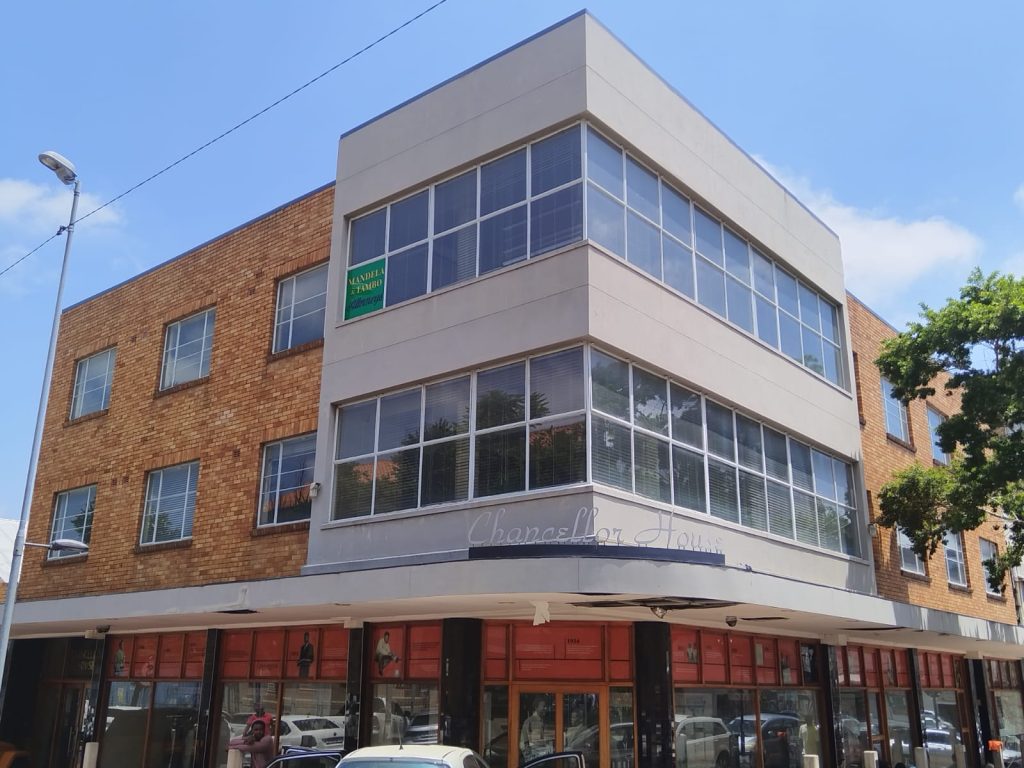The artwork was created from scrap metal, using an upturned rubbish skip as a base, surmounted by a figure brandishing a weapon in one hand, and in the other a defensive shield in the form of a dustbin lid. The sculpture is rich in symbolism, including a head with three faces to represent the three freedom fighters, topped with a feather like the one worn by King Shaka, on which perches a dove of peace.
The Sillverton Siege Monument was initiated by the Diepkloof Memorial Trust, in consultation with the City of Johannesburg, and with support from members of the Diepkloof community. The artwork was created by the sculptor Prof. Pitika Ntuli, and acquired by the City of Johannesburg as an important addition to its public art collection.
The monument commemorates the story of three young combatants who died in the Silverton Siege in 1980. The three members of Umkhonto we Sizwe (MK) came from Diepkloof in Soweto, and the group comprised Stephen Mafoko, Humphrey Makhubo and Wilfred Madela.
The artwork was launched on 23 January 2013 by the Executive Mayor of Johannesburg, Clr. Parks Tau, together with the Minister of Arts and Culture, Paul Mashatile. The monument unveiling was the centrepiece of an event to commemorate the 33rd anniversary of the Silverton Siege, attended by families of the Silverton Three, Umkhonto we Sizwe Military Veterans’ Association (MKMVA), Diepkloof residents,and local organisations, including the Silverton Trio Foundation and the Diepkloof Heritage Trust.
On 25 January 1980 the group who were to become known as the Silverton Trio were allegedly on their way to carry out a sabotage mission on petrol tanks at Watloo, near Mamelodi. En route to the mission, the three realized that they were being tailed by the police. In an effort to escape, the MK combatants took refuge in a branch of Volkskas Bank in Silverton, Pretoria. There the armed trio held 25 civilians in the bank hostage, and soon the bank was under siege by police. In negotiations with police, the trio made a number of demands including the release of Nelson Mandela and an aircraft to fly them to Maputo. During the six-hour siege, they took care not to injure the hostages.
The bank was stormed by a police, and all three cadres were shot dead. It is unclear if Stephen Mafoko opened fire when he realized that police had entered the building, or if police fired first. Humphrey Makhubu and Wifred Madela were killed swiftly, but Stephen Mafoko continued firing at police and threw a hand grenade. Police then gunned down Mafoko, leaving all thee MK fighters dead at the scene. Two civilians, Valerie Anderson and Anna de Klerk, were killed in the shootout, and several others were wounded.
Protected under Section 37 of the National Heritage Resources Act (Public Monuments and Memorials). “Public monuments and memorials must, without the need to publish a notice to this effect, be protected in the same manner as places which are entered in a heritage register …”

A culmination of research gathered over many years, the Online Johannesburg Heritage Register is being launched on Nelson Mandela Day 18 July 2025.
Among the many heritage sites featured is Chancellor House, the downtown offices of Mandela and Tambo Attorneys in the 1950s. After having been vacant and shuttered for more than a decade, this iconic building is being revived and brought to life once again as offices for the Community Development Department, which oversees the City’s Arts, Culture & Heritage Services.